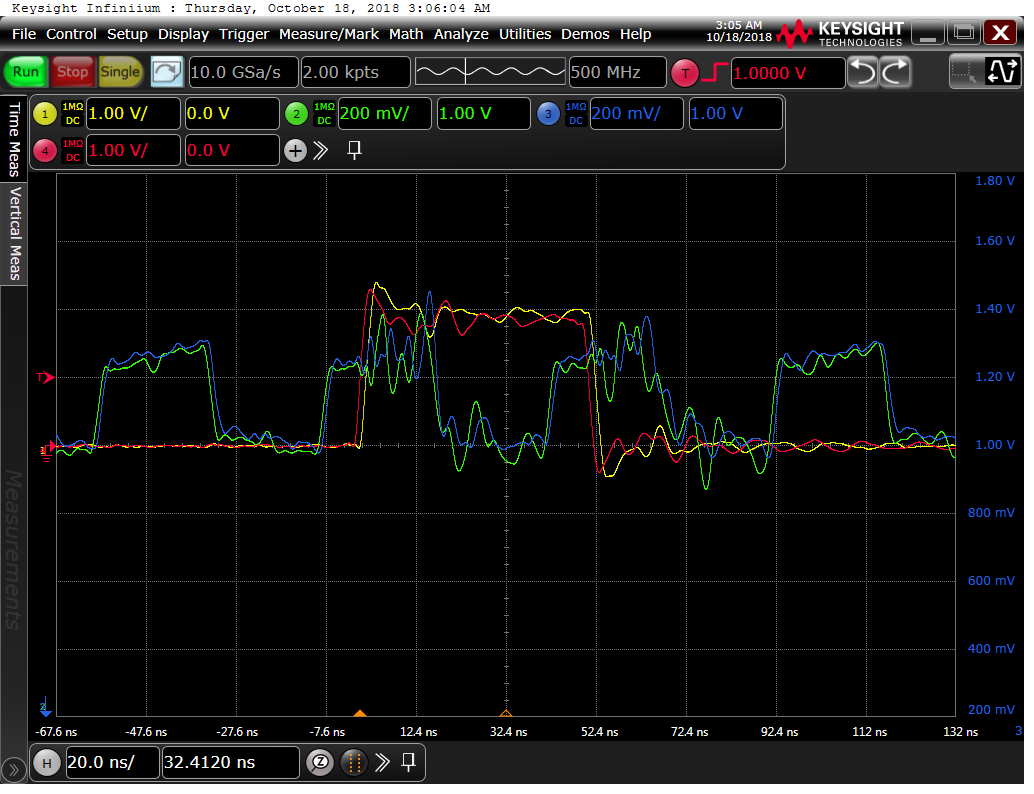Hello,
I wanted to provide an update on the resolution to the related thread regarding the use of the SYNC pulse to align multiple ADS5294 ADCs even when NOT using decimation. We were told by TI to use the SYNC in these instances and we are finding that it does seem to work – but not 100% of the time.
We implemented the SYNC and found that some of the time the application of the SYNC pulse simultaneously across 2 ADCs does not prevent our ADC samples from becoming misaligned. After sending the pulses, they still appear misaligned (i.e., off by 1 sample from each other) about 10% of the time based on the testing that we have done so far.
Note that after re-issuing the SYNC multiple times they do always end up eventually realigning.
I’ve attached some screenshots showing the SYNC pulses (red and yellow traces) and ADC sample clock inputs for both ADCs (blue and green traces). These were taken with a 20 MHz sample rate and no decimation. Disregard the over/undershoot as our probe grounding was not great.
- Do these traces look compliant with what is expected for the setup/hold time of the SYNC with respect to the sample clock inputs?
- What is the reliability of the sync pulse and are you aware of any reason why they would require multiple sync pulses? If there are instances where multiple SYNC pulses are required, is there a certain minimum number that we should program into our software?
- Are there any register settings we need to make to ensure consistency?
Thank you,
Bob




